Riding a bullet train in China is a trendy and fashionable way for your China Travel. The country now has the world's biggest high-speed rail network, stretching over 45,000 kilometers. These modern trains zip between cities at speeds of 250-350 km/h, making cross-country travel a breeze. Every day, more than 3,500 trains connect over 550 cities across 33 provinces. Want to go from Beijing to Hong Kong? Just hop on the world's longest high-speed route at 2,440 km.
Why Choose a China High Speed Train Ride: Fast, efficient, and comfortable - it's easy to see why high-speed rail has become China's favorite way to travel. Here's a reliable travel tip: If your destination is within a 4-hour high speed train ride in China, high-speed rail is your best bet. Take Beijing to Xi'an (1,212 km) or Beijing to Shanghai (1,318 km) - both trips are perfect examples of when train beats plane.
Where Do China's Bullet Trains Go: China's high-speed rail network reaches over 550 cities, connecting all major tourist hotspots. Our extensive network links all major tourist hotspots, from the Great Wall to the glittering cities of Guangzhou and Hong Kong, from the pandas in Chengdu to the karst mountains of Guilin. It even extends to Vientiane, Laos.
Travel China by High-Speed Rail with Asia Odyssey Travel: We'll handle everything - tickets, itineraries, and local support - while you sit back and enjoy the journey through this amazing country. Welcome aboard China's bullet train experience!
These essential China High Speed Train maps unlock China's extensive high-speed rail network, showcasing the impressive "8+8 Grid" system that connects the nation. By studying these route maps, you'll discover the smartest ways to plan your China adventure through ten major tourist cities. See how Beijing links to Shanghai in just 4.5 hours, or plot your journey from Xi'an's warriors to Chengdu's pandas. The maps reveal perfect city-hopping combinations: pair Zhangjiajie's peaks with Guilin's landscapes, or explore the southern triangle of Guangzhou, Shenzhen, and Hong Kong with ease.
Ready to experience China's most iconic rail routes? The Beijing-Shanghai line leads the pack, whisking you between these megacities in just 4.5 hours. The Beijing-Xi'an route unveils China's ancient heart, while the Chengdu-Chongqing connection serves up the best of Southwest China. Shanghai-Guangzhou links east to south, passing through stunning landscapes. Other favorites include the scenic Beijing-Guilin route, Xi'an-Chengdu's panda express, and the coastal run from Guangzhou to Hong Kong. For mountain lovers, the Shanghai-Zhangjiajie line offers breathtaking views throughout.
Discover China's highlights with these expertly crafted rail tour packages! The classic 8-day Beijing-Xi'an-Shanghai route combines ancient wonders with modern marvels. Each package includes hassle-free bullet train tickets, hotel transfers, and guided city tours - perfect for maximizing your China experience with minimal planning stress. View More China High Speed Train Tours >>
As China's high-speed rail hub, Beijing connects you to everywhere! The capital's major stations - Beijing South and Beijing West - serve as gateways to all popular routes. Hop on a bullet train to reach Shanghai in 4.5 hours, Xi'an in 5 hours, or even Hong Kong in just 9 hours. Perfect base for exploring China's must-see attractions!
Shanghai's ultramodern Hongqiao and Shanghai Railway stations are your springboards to China's east coast adventures! Zip to Beijing in just 4.5 hours, reach historic Suzhou in 30 minutes, or journey south to Guangzhou in 7 hours. This cosmopolitan hub makes exploring China's ancient water towns and modern cities incredibly convenient.
Beyond Beijing and Shanghai, China's bullet trains connect you to amazing destinations! Visit Xi'an's ancient wonders, meet Chengdu's pandas, explore Chongqing's spicy food scene, or discover Shenzhen's tech hub. Venture to Guilin's stunning karst landscapes, Zhangjiajie's floating mountains, or zip straight into Hong Kong's vibrant metropolis. Each city's now just a comfortable train ride away!
100+ China Bullet Train Tour Packages at Best Prices! Our packages include seamless station transfers, accommodations, and guided tours - making your China adventure completely hassle-free!
Most high-speed trains offer Second, First, and Business class options, while some D-trains include Hard and Soft sleeper cars for overnight routes.
China High Speed Train First Classes vs Second Class: Second Class is perfect for shorter trips (around 4 hours) and budget travelers. Want extra comfort for longer journeys? First Class is worth the upgrade, especially for families or extended trips. Choose based on your comfort needs and budget!





Booking train tickets in China is easier than you think! 1) Get tickets through the official 12306 app (requires Chinese phone number); 2) At Train Stations, look for English-speaking windows.And tickets open for booking 30 days ahead.
Confused about cities or routes? Save yourself the hassle and book through ASIA ODYSSEY TRAVEL - we'll handle everything from tickets to itinerary planning. Super convenient for stress-free travel! Tell us your travel plan:
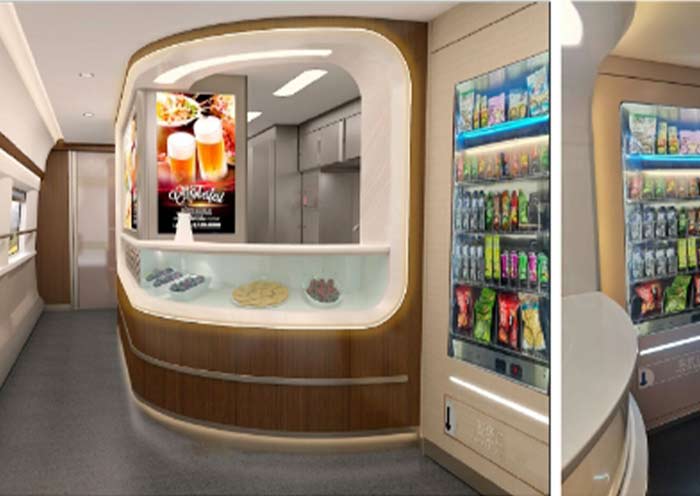

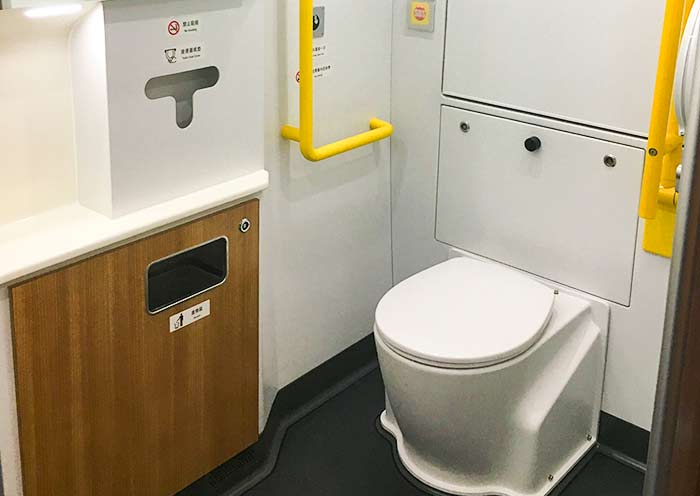

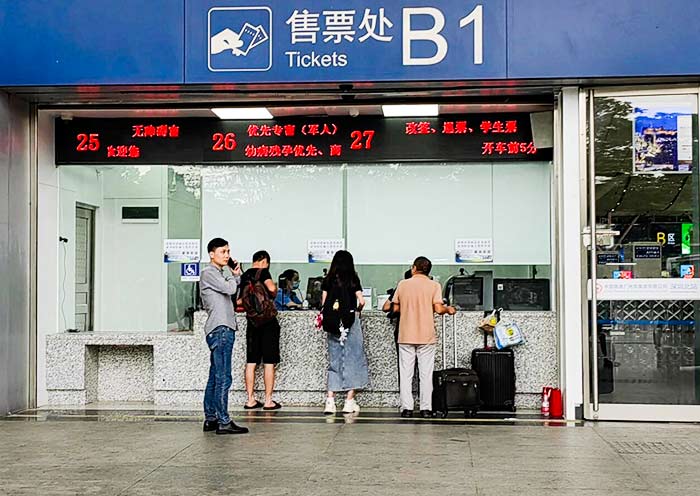
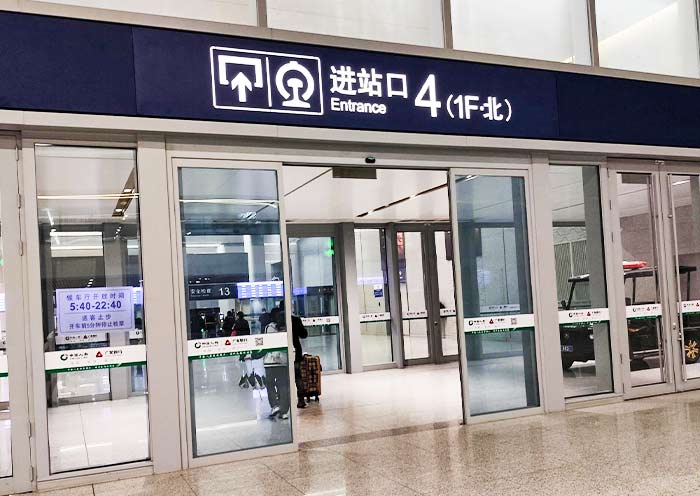

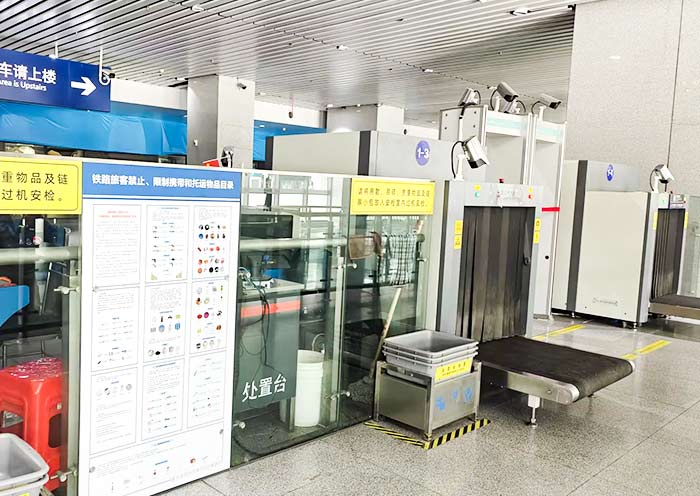




Traveling through China by high speed rail and bullet train offers numerous advantages and is a popular choice for both domestic and international travelers. It offers a combination of speed, convenience, comfort, and accessibility, making it an attractive choice for travelers seeking efficient and enjoyable journeys throughout China. Here are some reasons why travel to China by High Speed Train:
1). Speed and Efficiency: High speed trains in China can reach speeds of up to 350 kilometers per hour, allowing travelers to cover long distances in a fraction of the time compared to other modes of transportation. This efficiency is particularly beneficial when traveling between major cities.
2). Convenience and Accessibility: China's high-speed rail network is extensive, connecting major cities and popular tourist destinations across the country. This makes it easy for travelers to access a wide range of attractions and explore different regions conveniently.
3). Comfort and Amenities: High-speed trains in China are designed with passenger comfort in mind. They offer spacious seating, ample legroom, and modern amenities such as power outlets, Wi-Fi, and onboard dining options. Traveling by high-speed rail provides a comfortable and enjoyable experience.
4). Safety and Reliability: China's high-speed rail system has an excellent safety record, with strict regulations and advanced technology ensuring passenger safety. Trains operate on a reliable schedule, minimizing delays and providing a predictable travel experience.
5). Scenic Views: Traveling by high-speed rail allows passengers to enjoy scenic views of China's diverse landscapes, including rolling countryside, mountains, and picturesque rural areas. It offers a unique perspective on the country's natural beauty.
6). Environmental Friendliness: High-speed trains are a more eco-friendly option compared to air travel or road transportation. They produce lower carbon emissions per passenger, contributing to a more sustainable mode of travel.
7). Cost-effective: While high-speed train tickets may vary in price depending on the distance and class of travel, they are often more affordable than airfares for similar routes. Traveling by high-speed rail can be a cost-effective option for exploring China.
Yes, China's high speed trains have a strong safety record and are considered safe for travel. The Chinese government has placed a strong emphasis on safety in the development and operation of its high-speed rail network. Several measures are in place to ensure the safety of passengers. These include:
1). Advanced Technology: China has invested in state-of-the-art technology for its high-speed trains, including advanced signaling systems, automatic train protection, and train control systems. These technologies help monitor and control train operations, ensuring safe and efficient travel.
2). Rigorous Safety Standards: China has established stringent safety standards for the design, construction, and operation of high-speed rail infrastructure and trains. These standards cover aspects such as track design, train performance, signaling systems, emergency response procedures, and maintenance protocols.
3). Regular Inspections and Maintenance: High-speed trains and infrastructure undergo regular inspections and maintenance to identify and address any potential safety issues. This includes routine checks of tracks, train components, signaling systems, and other critical systems.
4). Experienced Operators: China's high-speed rail system is operated by well-trained and experienced personnel who are responsible for the safe operation of trains and the management of emergencies. These operators undergo comprehensive training programs to ensure they are equipped with the necessary skills and knowledge.
5). Emergency Preparedness: China has robust emergency preparedness and response systems in place for its high-speed rail network. This includes contingency plans for various scenarios, such as severe weather conditions, natural disasters, or technical failures. The aim is to swiftly address any emergencies and ensure passenger safety.
Certainly! Here are some interesting facts about trains in China:
1). Extensive High Speed Rail Network: China boasts the world's largest high-speed rail network, with over 40,000 kilometers of track, accounting for more than two-thirds of the world's total. It connects major cities, including Beijing, Shanghai, Guangzhou, and Chengdu, as well as numerous other destinations.
2). Record-Breaking Speeds: China holds multiple speed records for high-speed trains. The Fuxing (formerly known as the CR400) train set a record with a top speed of 603 kilometers per hour during a test run in 2020, making it the fastest commercial train in the world.
3). Impressive Train Stations: China is home to some of the world's largest and most architecturally stunning train stations. For example, Beijing South Railway Station covers an area of 320,000 square meters and has 24 platforms, while Shanghai Hongqiao Railway Station is an integrated transportation hub with extensive facilities.
4). Maglev Technology: China operates the world's first commercial magnetic levitation (maglev) train, the Shanghai Maglev train. It can reach speeds of up to 431 kilometers per hour and connects Shanghai Pudong International Airport with the city center.
5). Green Initiatives: China is actively pursuing green initiatives in its rail transportation system. It has introduced solar panels on some trains, stations, and trackside infrastructure to generate renewable energy. Additionally, efforts are being made to reduce energy consumption and carbon emissions in train operations.
6). Innovative Train Designs: China has developed unique train designs to cater to different travel needs. For instance, the Harmony CRH380A train features an aerodynamic shape inspired by the beak of a bird, reducing wind resistance and increasing efficiency.
7). Massive Passenger Volume: China's trains handle an enormous volume of passengers. During the annual Spring Festival travel rush, known as Chunyun, the railway system experiences a significant surge in passengers, with millions of people traveling across the country to celebrate the holiday with their families.
8). Train Ticketing Technology: China has implemented advanced ticketing systems, including e-ticketing and mobile ticketing options. Passengers can conveniently book and manage their train tickets through online platforms and mobile apps.
9). Belt and Road Initiative: China's high-speed rail network plays a vital role in the Belt and Road Initiative, a global infrastructure development project. It connects China to neighboring countries and beyond, facilitating trade, cultural exchanges, and regional integration.
The cost of riding high-speed rail in China can vary depending on several factors, including the distance traveled, the class of service chosen, and the specific train route. It's also worth noting that ticket prices for high-speed trains in China are generally more affordable compared to airfares for similar routes, making high speed trains an attractive and cost-effective option for travel within the country.
Here's a general overview of the cost range for high speed train tickets in China:
1). Short Distances: For shorter distances, such as traveling between neighboring cities, the ticket prices are relatively lower. The cost can range from around 30 to 150 Chinese Yuan (CNY) or more, depending on the distance and class of service.
2). Medium Distances: For medium-distance trips, such as traveling between major cities within a province or region, ticket prices can range from approximately 200 to 500 CNY or more, depending on factors like distance, class, and demand.
3). Long Distances: Long-distance journeys, such as traveling between cities that are far apart or crossing multiple provinces, tend to have higher ticket prices. The cost can range from approximately 500 to 1,500 CNY or more, depending on the abovementioned factors.
4). Class of Service: High-speed trains in China generally offer different classes of service, such as second class, first class, and business class. The ticket prices increase as you move up in class, with business class being the most expensive and offering additional amenities and more spacious seating.
It's important to note that these price ranges are approximate and can fluctuate based on factors like travel season, availability, and promotions. Popular routes or peak travel periods may also have higher demand and potentially higher prices.
To get accurate and up-to-date pricing information for specific routes and travel dates, it's recommended to check the official websites or mobile apps of China's railway authorities, such as China Railway (12306.cn), or Contact us for a memorable China high speed train tour.
The "Shangri-La Express" is often considered the most luxurious train in China. Operated by China Railway, the Shangri-La Express offers a premium and exclusive travel experience. It is designed for tourists and offers a combination of comfort, luxury, and scenic journeys.
The Shangri-La Express primarily operates on special tourist routes, taking passengers through some of China's most picturesque landscapes and cultural attractions. Here are some key features and highlights of the Shangri-La Express:
1). Elegant Accommodation: The train offers well-appointed and comfortable cabins, which are tastefully decorated with a blend of modern amenities and traditional Chinese elements. Passengers can choose from various cabin categories, including Deluxe Cabin, Superior Cabin, and Shangri-La Cabin.
2). Dining and Cuisine: The train features a dining car where passengers can enjoy gourmet meals prepared by professional chefs. The menu often includes a mix of Chinese and international cuisine, showcasing regional flavors and specialties.
3). Observation Car: The Shangri-La Express has an observation car with large windows, providing passengers with panoramic views of the passing landscapes. It offers an ideal setting for relaxation, socializing, and enjoying the scenery.
4). Excursions and Guided Tours: The train's itineraries usually include off-train excursions and guided tours to popular tourist attractions along the route. Passengers have the opportunity to explore cultural sites, historical landmarks, and natural wonders with experienced guides.
5). Personalized Service: The Shangri-La Express prides itself on providing personalized service to its passengers. The onboard staff is trained to cater to the needs and preferences of guests, ensuring a memorable and comfortable journey.
It's important to note that the Shangri-La Express operates on specific routes and schedules, often focused on showcasing the natural beauty and cultural heritage of China's regions. These luxury train journeys are typically designed for tourists seeking a unique and immersive travel experience. Checking with reputable tour operators like Asia Odyssey Travel or luxury train providers can provide more details on the available options.
The fastest train route in China is the Beijing-Shanghai High Speed Railway, which connects the country's capital, Beijing, with its largest city, Shanghai. This route is known for its high-speed train service, offering travelers a swift and efficient journey between these two major metropolises.
The Beijing-Shanghai High Speed Railway covers a distance of approximately 1,318 kilometers (819 miles) and has a total travel time of around 4.5 to 6 hours, depending on the specific train and service type. The trains on this route can reach top speeds of up to 350 kilometers per hour (217 miles per hour).
The high-speed trains operating on the Beijing-Shanghai route are equipped with advanced technology and offer modern amenities, making the journey comfortable and convenient for passengers. The route passes through several provinces and cities, showcasing a blend of urban landscapes and scenic countryside views.
The Beijing-Shanghai High Speed Railway has become one of the busiest and most popular train routes in China, facilitating efficient transportation between two key economic and cultural hubs. It has significantly reduced travel time compared to conventional trains, making it a preferred choice for both business and leisure travelers.
Yes, China has built the world's largest bullet train network. The high speed rail network in China is extensive and continually expanding, making it the largest in the world in terms of both mileage and the number of operational high-speed train lines.
China's high speed rail system has experienced remarkable growth and development over the past few decades. Since the launch of its first high-speed rail line in 2008, China has rapidly expanded its network, connecting major cities, provinces, and regions across the country.
As of my knowledge cutoff in late 2021, China's high-speed rail network spans over 40,000 kilometers, covering a vast portion of the country. This extensive network connects major cities, including Beijing, Shanghai, Guangzhou, Shenzhen, Chengdu, Xian, Wuhan, and many others.
China's commitment to high-speed rail has allowed it to surpass other countries in terms of the scale and reach of its network. The country has invested heavily in infrastructure development, technology, and construction to create a comprehensive and efficient railway system.
The high speed trains in China are known for their impressive speeds, often reaching up to 350 kilometers per hour (217 miles per hour). The bullet train network has significantly reduced travel times between cities, providing convenient and efficient transportation options for both domestic and international travelers.
It's important to note that China's high-speed rail network continues to expand and evolve. New lines, extensions, and upgrades are regularly being constructed, further enhancing connectivity and accessibility across the country.
High speed rail travel in China is generally more affordable compared to air travel for similar distances. However, the cost comparison between high-speed rail and air travel depends on several factors, including the specific route, travel class, time of booking, and availability of discounts or promotions. Here are some key points to consider:
1). Ticket Prices: In many cases, high-speed rail tickets in China are priced lower than airfares for the same distance. High-speed rail offers a cost-effective option, especially for medium to short distances. However, ticket prices can vary depending on factors such as travel season, demand, and availability.
2). Additional Costs: When considering the cost of air travel, it's important to factor in additional expenses such as baggage fees, airport transfers, and potential charges for in-flight services. High-speed train travel often has fewer additional costs, making it a more straightforward and transparent pricing option.
3). Time and Convenience: High-speed rail can provide time savings and convenience compared to air travel for certain routes. While air travel may be faster for long distances, high-speed trains often have the advantage of city-center-to-city-center transportation, eliminating the need for additional travel to and from airports.
4). Travel Experience: High-speed rail travel in China offers a more spacious and comfortable experience compared to air travel, especially for shorter trips. Passengers have more legroom, larger seats, and the freedom to move around during the journey.
It's important to note that there are exceptions where air travel might be more cost-effective, especially for long-distance or international travel. Airlines may offer promotional fares or discounted tickets during certain periods, which can make air travel more competitive in terms of pricing.
Overall, high speed rail travel in China is often regarded as a more affordable option compared to air travel for domestic journeys, especially for shorter to medium distances. However, it's essential to assess individual circumstances, preferences, and specific route details to make an informed decision.
Yes, foreigners can buy high speed train tickets online in China. There are several ways to purchase China bullet train tickets with a passport:
1). Official Websites: China Railway's official website, 12306.cn, allows users to purchase train tickets online. The website is available in Chinese, but it also offers an English version for international users. You can create an account, search for train routes, select the desired train, and proceed with the booking process using your passport information.
2). Third-Party Ticketing Platforms: There are various third-party ticketing platforms available, which provide online ticket booking services for high-speed trains in. These platforms often have English language options and user-friendly interfaces, making it easier for foreigners to search for trains and purchase tickets using their passport details.
3). Mobile Apps: China Railway's official mobile app and other third-party apps that have mobile versions that allow users to search, book, and purchase high-speed train tickets with a passport. These apps provide convenience and flexibility for travelers to make ticket bookings on the go.
When purchasing high-speed train tickets online, it's important to ensure that you provide accurate passport information as it will be required during the booking process. Additionally, it's advisable to book your tickets in advance, especially during peak travel seasons, to secure your preferred train and seat.
After completing the online ticket purchase, you will receive an electronic ticket, often in the form of a confirmation email or a QR code. Make sure to bring a printed copy or have a digital version of the ticket on your mobile device when traveling, as you may be required to present it along with your passport during ticket checks at the train station. Contact us if you need help for your China high speed train tour.
While the Qinghai-Tibet Railway is renowned for its breathtaking scenic beauty, it is not a high-speed train ride. The Qinghai-Tibet Railway is a remarkable engineering feat that connects Xining in Qinghai Province to Lhasa in Tibet, offering stunning views of the Tibetan Plateau and the Himalayan mountain range. However, it operates at a relatively slower speed compared to high-speed trains.
When it comes to high speed train rides in China, there are several routes that offer scenic beauty. Here are some notable ones:
1). Beijing to Shanghai High speed train ride: This route takes you through the picturesque landscapes of the North China Plain, passing by cities, countryside, and the Yangtze River along the way.
2). Chengdu to Chongqing High speed train ride: This route showcases the natural beauty of Sichuan Province, with lush green mountains, rivers, and scenic countryside views.
3). Hong Kong to Guilin High speed train ride: This route takes you through the picturesque karst landscapes of Guangxi Province, with stunning limestone peaks, rivers, and rice terraces.
4). Hangzhou to Huangshan High speed train ride: This route offers views of the beautiful West Lake in Hangzhou and later takes you through the scenic mountains and tea plantations of Anhui Province, culminating in the renowned Huangshan (Yellow Mountain) area.
5). Xian to Chengdu High speed train ride: This route travels through the scenic landscapes of Shaanxi and Sichuan provinces, including the famous Qinling Mountains and the charming countryside.
These are just a few examples, and there are many other high speed train routes in China that offer their own unique scenic attractions. The specific beauty of each route can vary depending on the season and weather conditions.
Yes, in certain areas of Chongqing, China, trains do run through apartment buildings. Chongqing is known for its unique urban landscape, characterized by hilly terrain and dense population. Due to limited space and the need for efficient transportation infrastructure, some train lines, including both high-speed rail and conventional rail, are constructed to pass through or alongside residential buildings in certain parts of the city.
One notable example is the Light Rail Line 2 in Chongqing, which runs through residential buildings in the Liziba area. This section of the rail line is often referred to as the "Mountain City Light Rail" or the "Flying Train" due to its unique elevated track design. The train passes through residential buildings, creating an iconic and impressive sight.
It's important to note that the design and construction of such train lines take into account safety measures and adhere to strict regulations to ensure the well-being of residents. Noise reduction measures and safety barriers are typically implemented to minimize any impact on residents' daily lives.
The presence of trains running through or alongside buildings in Chongqing adds to the city's distinctive character and has become a notable feature that draws visitors' attention. It showcases the innovative urban planning and transportation solutions implemented in response to the city's topography and population density.
China's experience and expertise in constructing and operating high-speed rail have also positioned it as a global leader in this field. Combined with effective project management, strong government support, and collaboration between various stakeholders, China has been able to develop an extensive high-speed rail network due to several key factors:
1). Government Commitment and Investment: The Chinese government has made high-speed rail development a national priority and has dedicated significant financial resources to its construction. The government sees high-speed rail as a crucial component of its transportation infrastructure, promoting economic growth, regional integration, and connectivity.
2). Large-Scale Planning and Implementation: China has adopted a comprehensive and ambitious approach to high-speed rail development. The government has implemented long-term plans, such as the "Medium and Long-term Railway Network Plan," which outlines the goals and strategies for expanding the rail network, including high-speed rail. This systematic planning has allowed for coordinated implementation and efficient utilization of resources.
3). Rapid Construction and Technology Transfer: China has demonstrated its ability to construct high-speed rail lines at an impressive speed. The country has utilized advanced construction techniques, including prefabrication and modular designs, to expedite the construction process. Additionally, China has benefited from technology transfer and partnerships with international companies, particularly in the early stages of high-speed rail development.
4). Extensive Geography and Population Density: China's large land area and substantial population provide a strong rationale for developing a comprehensive high-speed rail network. The country's vast size and high population density make high-speed rail an efficient mode of transportation for connecting major cities and regions, reducing travel times and congestion on roads and airports.
5). Integration of Regional Development: China's high-speed rail development has been closely tied to regional development strategies. The government has used high-speed rail to promote economic growth in less-developed inland regions by improving connectivity and accessibility to major economic hubs. This approach has contributed to balanced regional development and reduced regional disparities.
6). Technology and Innovation: China has invested in research and development to advance high-speed rail technology. It has developed its own high-speed train models, such as the CRH series, which are designed to operate at high speeds while ensuring safety, comfort, and energy efficiency.
Surveys have suggested that somewhere between 50-75% of China's urban population have traveled by high-speed rail. The exact percentage likely depends on the city and demographic factors. In China, high speed rail has become a popular travel option for business trips, tourism, and visits to family members in other cities. It provides a convenient alternative to air and road travel.
Here are some details on high speed rail usage in China:
1). China has the world's longest high-speed rail network, with over 40,000 km of lines in operation as of 2019. This is more than 60% of the world's total high-speed train tracks.
2). Ridership on China's high-speed rail lines has increased rapidly since the network first opened in 2008. By 2019, Chinese high-speed trains were carrying over 2 billion passengers annually.
3). High speed rail accounts for about two-thirds of China's total passenger rail traffic. This indicates a very high level of adoption and usage among train travelers in the country.